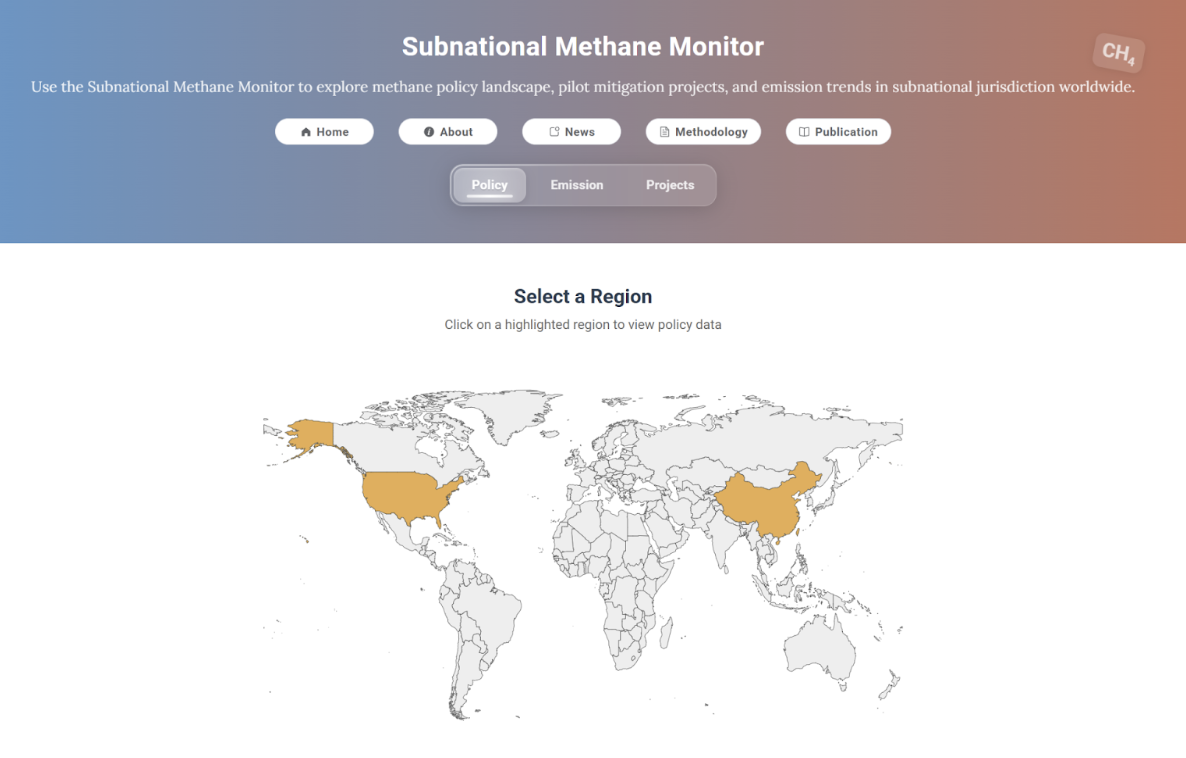Methane, a greenhouse gas 80 times more potent than CO2 in the near term, drives nearly one-third of current warming. Yet it remains under-addressed in many climate strategies. To stay on track for 1.5 °C, we must slash methane emissions quickly, especially from energy, agriculture, and waste. While national pledges set the stage, subnational governments and local stakeholders implement the day-to-day policies and projects that move the needle. Cities, states, provinces, and regions are in the position to experiment with tailored regulations and pilot initiatives. However, there is currently a lack of integrated tracking of subnational emissions and actions, which hinders transparency and the exchange of successes and lessons learned.
To fill a critical information gap, the California-China Climate Institute (CCCI) proudly launches the Subnational Methane Monitor—the first centralized, global platform tracking:
- Policies: Local regulations, targets, and binding standards across sectors
- Projects: Pilot and scaled-up efforts in waste management, dairy digesters, pipeline leak detection, and more
- Emissions: Time-series data and trend visualizations at subnational resolution
The current version includes subnationals in the United States and China. By aggregating data on regulations, evaluating policy ambition, mapping pilot projects, and visualizing emission trends, this platform empowers jurisdictions to identify gaps, benchmark progress, and share best practices. Bridging the gap between local action and global climate goals, the Subnational Methane Monitor turns data into actionable insights, accelerating collaboration to curb this super-pollutant.
This platform was made possible by the research conducted by Rixin Zhu, Fan Dai, Jessica Gordon at CCCI, and Yuyu Zhou and Fengxiang Guo at the University of Hong Kong. We would also like to express our sincere gratitude to the generous support from the Global Methane Hub.


